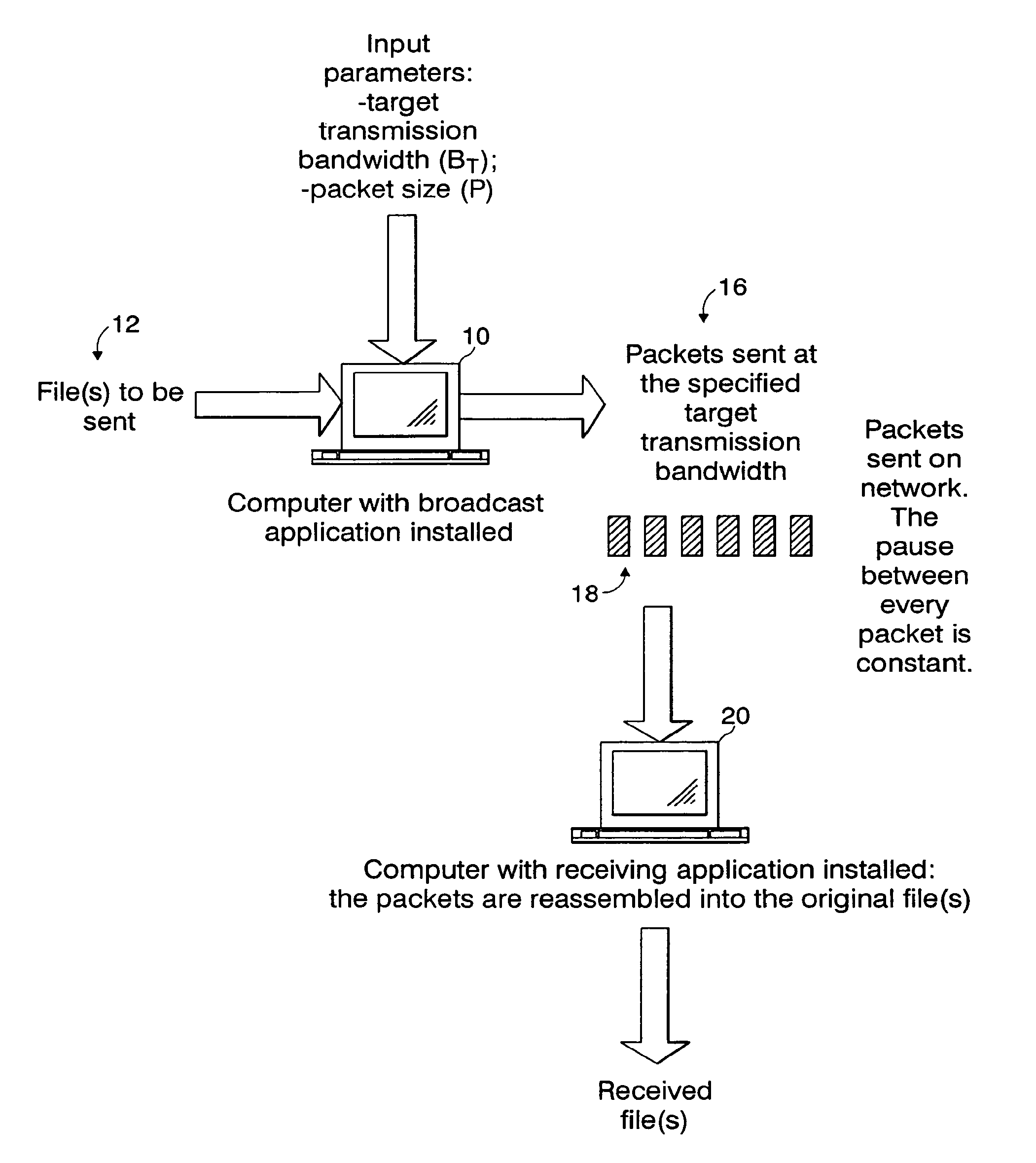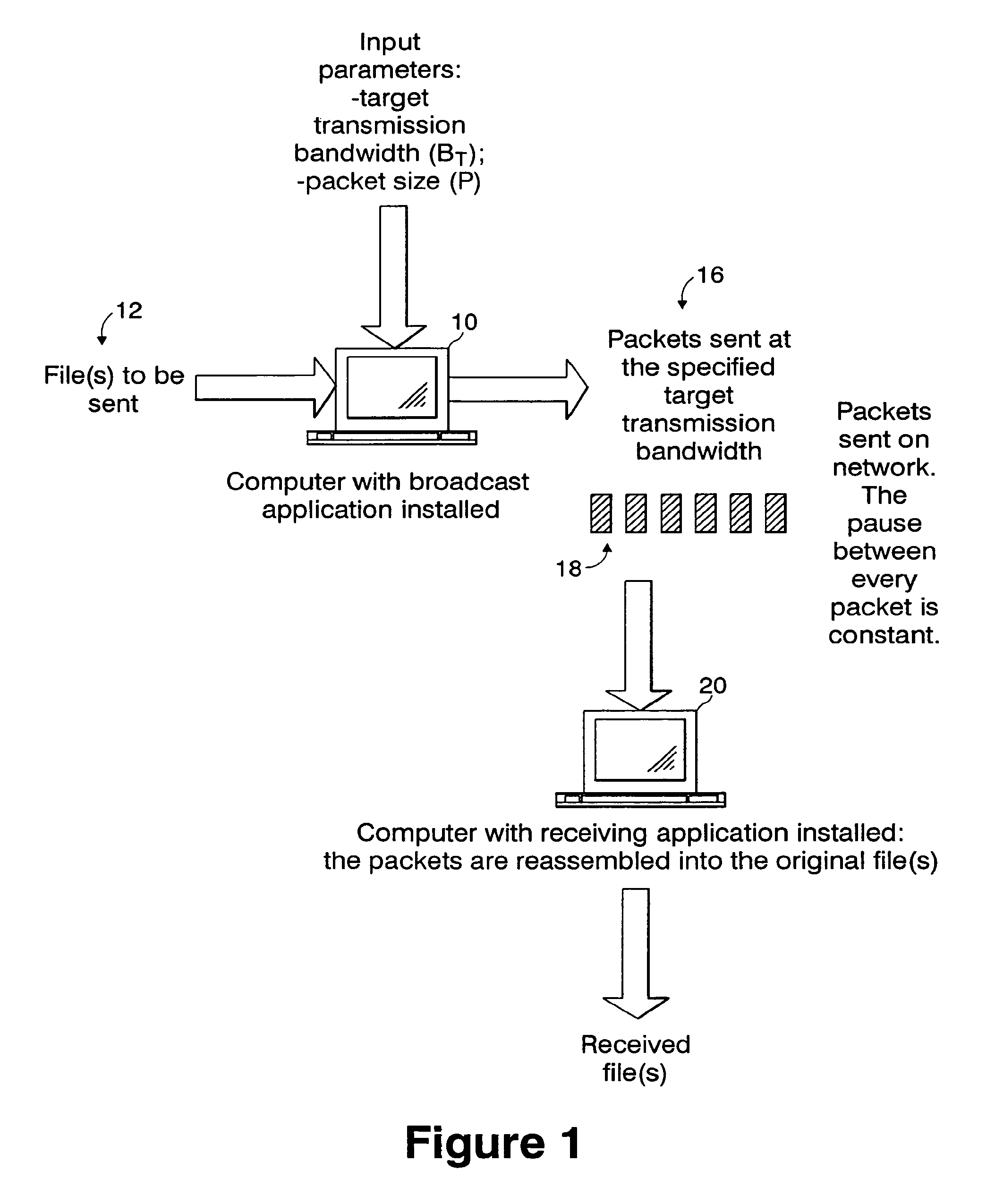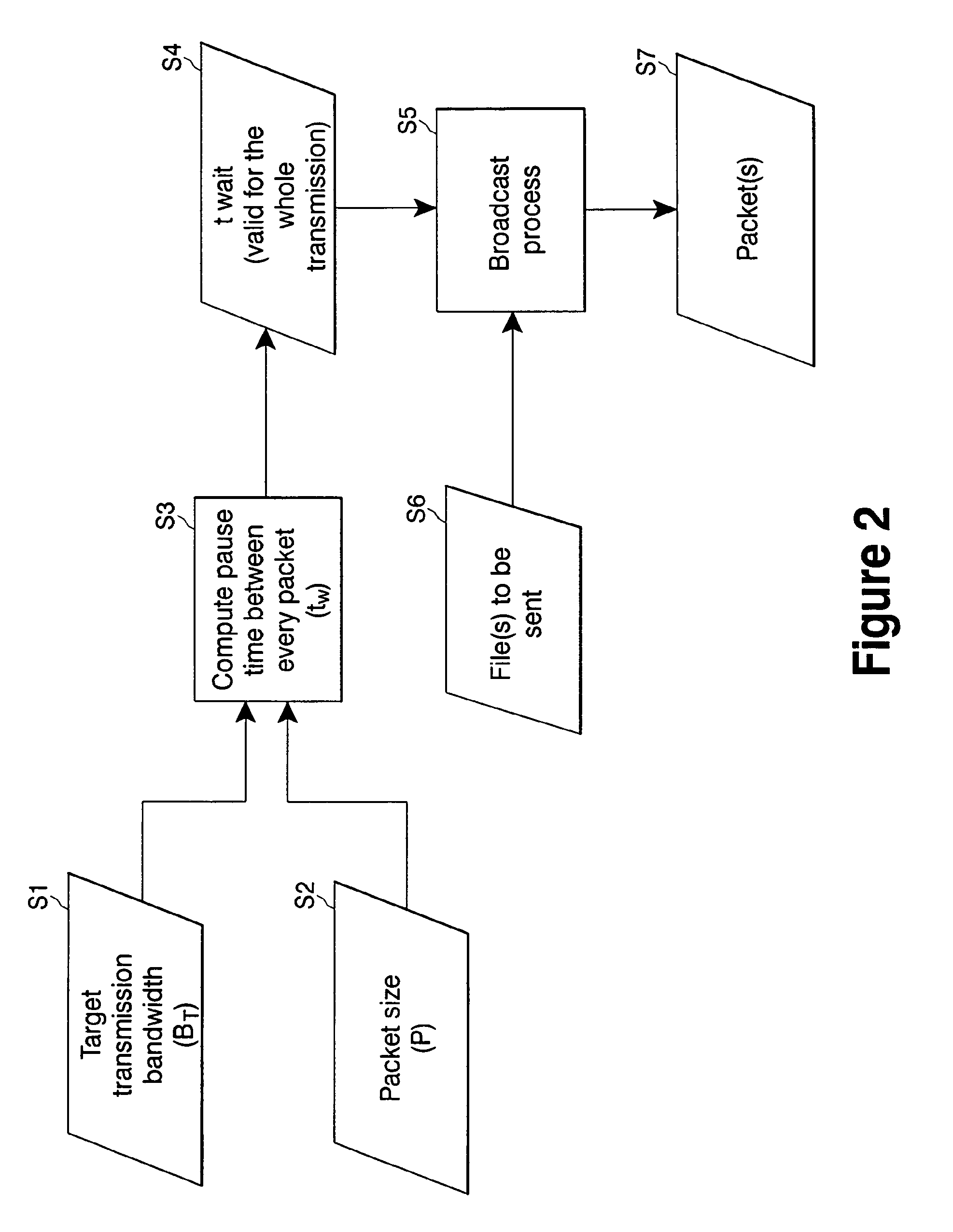Method and system of data packet transmission timing for controlling bandwidth
a technology of data packet transmission and bandwidth control, applied in the direction of time-division multiplex, multiplex communication, electrical apparatus, etc., can solve the problems of unreliable protocols, automatic re-transmission of lost or corrupted packets, and various problems
- Summary
- Abstract
- Description
- Claims
- Application Information
AI Technical Summary
Benefits of technology
Problems solved by technology
Method used
Image
Examples
Embodiment Construction
[0039]In the transmission of data packets, bandwidth is usually defined as the amount of data transmitted in a given time frame. Bandwidth control refers to the capability to control the bandwidth, i.e., the rate of transmission for a given amount of data. A significant value to evaluate bandwidth control quality is the mean (or average) bandwidth BM, that is, the arithmetic mean value about which the actual transmission rate centers during the entire transmission. The target bandwidth BT is defined as the needed (selected) bandwidth for a given content transmission. In some cases, BT is an amount of bandwidth that is sold or leased to a content producer by a broadcast facility.
[0040]If BT is known, the mean bandwidth BM can be defined by the following equation:
(BT−ε)BMBT+ε) (Equation 1-1)
where
[0041]BT=the target bandwidth
[0042]BM=mean bandwidth
[0043]ε=error or deviation of BM from BT
[0044]The main goal of bandwidth control is to minimize the error ε between BM and BT. To consider...
PUM
 Login to View More
Login to View More Abstract
Description
Claims
Application Information
 Login to View More
Login to View More - R&D
- Intellectual Property
- Life Sciences
- Materials
- Tech Scout
- Unparalleled Data Quality
- Higher Quality Content
- 60% Fewer Hallucinations
Browse by: Latest US Patents, China's latest patents, Technical Efficacy Thesaurus, Application Domain, Technology Topic, Popular Technical Reports.
© 2025 PatSnap. All rights reserved.Legal|Privacy policy|Modern Slavery Act Transparency Statement|Sitemap|About US| Contact US: help@patsnap.com



